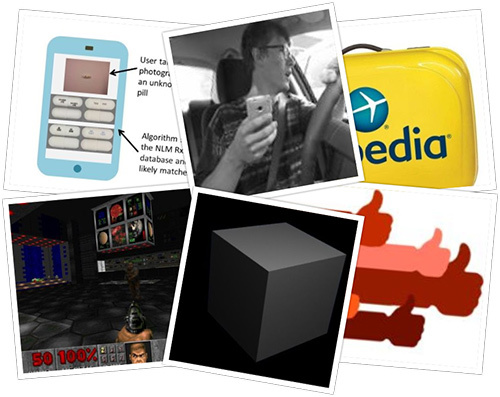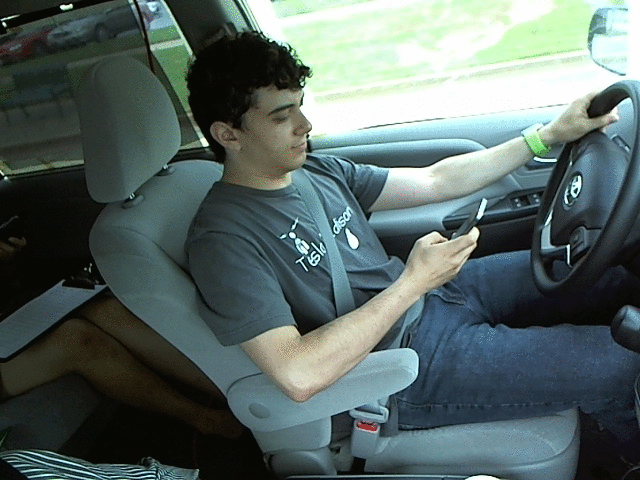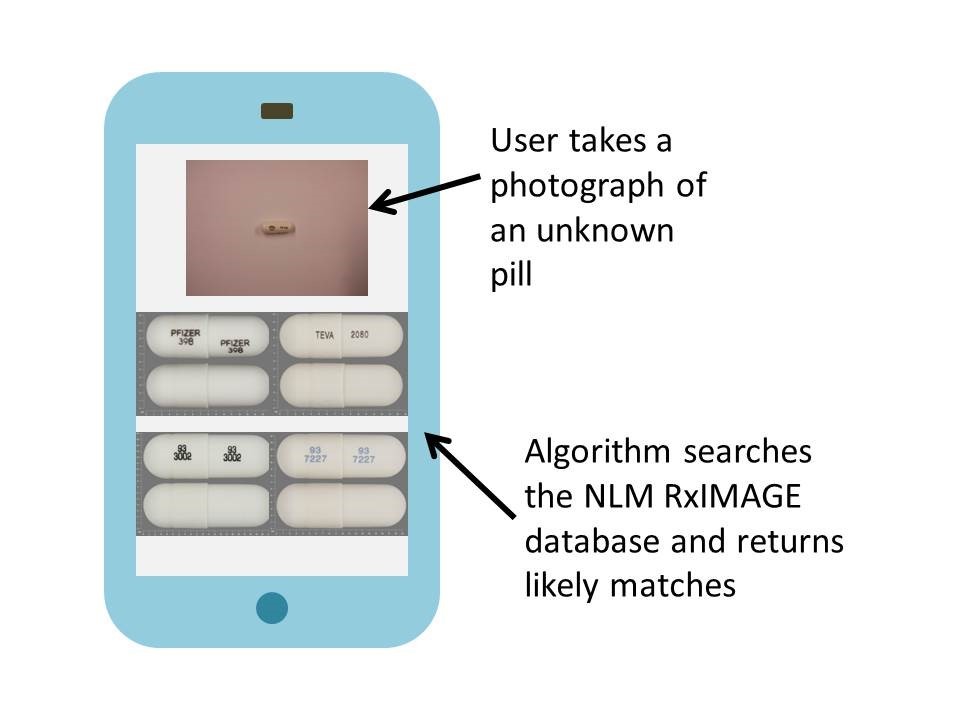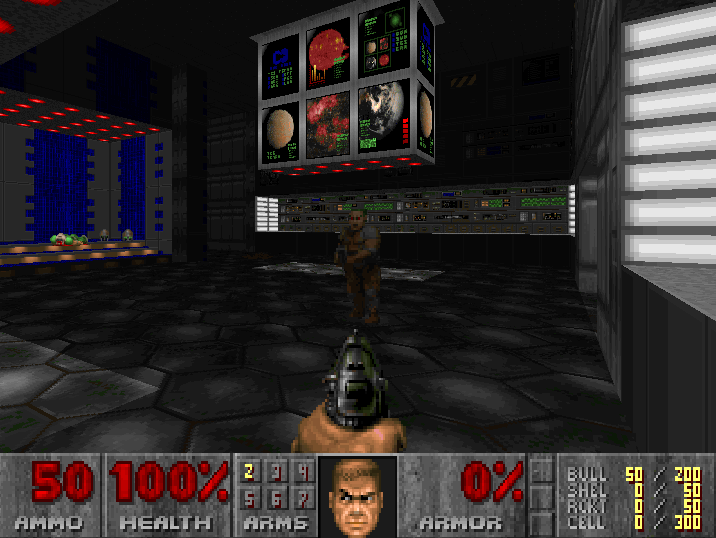Machine Learning Competitions (Spring-Summer 2016)
From May to September, lovers of complex machine learning tasks can take part in several contests offering large cash prizes. Contests are held by resources: Kaggle, which specializes in such contests, DCA, creating services based on Big Data technologies, an Artificial Intelligence research platform based on Doom ViZDoom, and the US National Library of Medicine.


')
Prize pool :
1st place - $ 30,000
2nd place - $ 20,000
3rd place - $ 10,000
Deadline : May 2, 2016
Customer satisfaction is a key criterion for success for everyone, from support services to top managers. Dissatisfied customers no longer return and, worse, rarely express their dissatisfaction before leaving. The Bank of Santander asks Kaggle users to help identify dissatisfied customers at an early stage of the relationship. This will enable the bank to take proactive steps to increase customer satisfaction before it is too late. In this competition, you will work with hundreds of anonymized signs to assess how satisfied the customer is with their experience with the bank.
The competition is coming to an end. The competition is very high. At the moment - more than 5,000 participants.
Data: www.kaggle.com/c/santander-customer-satisfaction/data
Description: www.kaggle.com/c/santander-customer-satisfaction
Rating of participants: www.kaggle.com/c/santander-customer-satisfaction/leaderboard

Prize pool :
1st place - $ 12500
2nd place - $ 7500
3rd place - $ 5000
Deadline : June 10, 2016
Planning a vacation of your dreams or even a short-term getaway for the weekend can be a mind-blowing job. Among the hundreds and thousands of hotels to choose from in each area, it is difficult to determine in advance which of them will best suit your personal preferences. Go to a quiet patriarchal hotel with mint cushions that you like so much, or risk moving to a new one, with a trendy pool bar? Expedia wants to help its users find hotels by providing personalized recommendations. This is not an easy task for a site with hundreds of millions of visitors every month! Expedia now uses search options to refine the recommendations of various hotels, but there are not enough specific client requests to personalize recommendations for each user.
In this competition, Expedia asks Kaggle users to compare customer data and predict the probability of which of the 100 different hotel groups the user will stop at. The data in this contest is a random sample from real Expedia data.
Data: www.kaggle.com/c/expedia-hotel-recommendations/data
Description: www.kaggle.com/c/expedia-hotel-recommendations
Rating of participants: www.kaggle.com/c/expedia-hotel-recommendations/leaderboard

Prize pool :
1st place: 300 thousand rubles
2nd place: 170 thousand rubles
3rd place: 125 thousand rubles
The next five best participants will be presented on Microsoft Xbox One.
Deadline : May 30, 2016
Winners Announced: June 10, 2016
BlackBox Challenge is an open competition for learning and programming a bot with AI (artificial intelligence). In its course, participants must train their agent to play a game with rules unknown in advance. At each stage, the bot finds out the state of the gaming environment and selects between four possible actions in it. A bot receives a reward for his moves, but sometimes not immediately, so that he cannot always evaluate the correctness of his choice. Moreover, in the rewards there is an element of chance to get rid of the determinism of the game and make it unpredictable.
To participate you need to download the game environment simulator and training data, create a model and train the agent to play using any of the available methods. The solution code is uploaded to the site, the system extremely quickly checks it and reports the result. Participants are ranked according to the best result of each. In the unlikely result of two participants, the one who previously loads the winning solution will have a higher place.
Competition page: blackboxchallenge.com/home
Rating of participants: blackboxchallenge.com/leaders

Prize pool :
1st place - $ 30,000
2nd place - $ 20,000
3rd place - $ 15,000
Deadline : August 1, 2016
We were all in such a situation: green lights up at the intersection, and the car in front of us does not move. Or an unremarkable car on the track suddenly slows down and starts writing out a pretzel. When you pass a problem driver, what do you expect to see? You would not be surprised if he sends a message from a mobile phone or is in the process of a live conversation on a smartphone that presses to his ear with one hand.
According to the US Department of Disease Control (CDC), the vehicle safety department, one out of every 5 accidents is caused by a distracted driver. In other words: in the USA, due to the fault of distracted drivers, 425,000 people are injured every year, 3,000 people die, and more than 8 people die every day and 1,161 are injured.
State Farm is hoping to improve this scary statistic and protect its customers by experimenting with whether DVRs can automatically detect distracted drivers. Providing arrays of images from DVRs, State Farm asks Kaggle users to classify the behavior of each of the drivers. Do they control the car carefully, wearing a seat belt, or take a selfie with friends in the back seat? Competition participants receive images of drivers who are directly involved in driving or something else. Their task is to create a program that determines how far the driver is distracted from driving a car on each of the presented images.
Distractions from management can be divided into 3 main types: visual, when the driver tears his eyes off the road, manual, when he takes his hands off the wheel, and mental, when he is distracted by communication.
Classes that distract the driver, include cell phone conversations, sending messages, eating and driving, conversations with neighbors. The use of equipment built into the machine (such as navigation systems or radio) can also be a source of distraction. All these activities can pose a threat to the safety of the driver and other road users, but typing and sending messages while driving is especially dangerous because it combines all three types of distractions.

Data: www.kaggle.com/c/state-farm-distracted-driver-detection/data
Description: www.kaggle.com/c/state-farm-distracted-driver-detection
Rating of participants: www.kaggle.com/c/state-farm-distracted-driver-detection/leaderboard

Prize pool :
1st place - $ 25,000
2nd place - $ 15,000
3rd place - $ 5000
Two incentive prizes of $ 2500.
Application period: April 4 - May 16, 2016
Winners Announced: August 1, 2016
The US National Library of Medicine (NLM) in January of this year published a notice of a competition for tablet image recognition programs. Participants are required to contribute to the development of high-quality algorithms and programs that can match known images of tablets used in recipes with images from the RxIMAGE NLM database. NLM plans to use the work of the contest participants to create future software and APIs that will search for the best matches in the RxIMAGE database with snapshots of unknown tablets made on a smartphone.
Instructions for submitting applications for the competition include:
References to data that will be used, including file specifications; Bid details, including software specifications, examples, bidding details, virtual machine specifications, rating system; Evaluation criteria and selection of winners; Software code of software that will be used for evaluation.
The software created by the participants should be able to take as input the directories containing an arbitrary number of snapshots sent by clients and reference images and rank them in order of how similar they are.
Competition page: pir.nlm.nih.gov/challenge

Deadline for applications for warm-up tournament: 05/31/2016
Deadline for submitting applications for the final tournament: 08/15/2016
Results Announcement (CIG): September 20-23, 2016
Doom is considered one of the most significant titles in the gaming industry: the game authors popularized the first-person shooter (FPS) genre and were the pioneers of 3D graphics with the effect of presence. Although more than 20 years have passed since the release of Doom, the methods of developing bots with AI in modern shooters have not changed much. In particular, bots should still be cheating, gaining access to internal game data, such as maps, locations and positions. In contrast, gamers-people can play FPS using only the computer screen as information. Can AI play Doom effectively using only direct visual information?
Purpose: Participants in a Visual Doom AI competition must send controllers (in C ++, Python, or Java). The provided software gives real-time access to the screen buffer, as the only information on which a bot can base its decisions. The winner of the competition will be determined by the results of the tournament bots for elimination.
Although participants are allowed to use any technique to create a controller, the design and effectiveness of the Visual Doom AI environment allows and encourages participants to use machine learning methods, such as reinforced deep learning.
The course of the competition
1. A limited knockout tournament on a famous map.
The only available weapon is the rocket launcher, from which the agents start. In addition, they can get medical kits and ammunition.
2. Tournament without restrictions on shooting on an unknown map.
Various weapons and items are available. Two cards are provided for training. The final score will be on three maps previously unknown to participants.
What will the final match be like?
Your controller will fight against all other controllers for 10 minutes on a simple map. Each game will be repeated 12 times for part 1 and 4 times for part 2, which includes 3 cards. The location of the controllers will be determined by the number of frags.
In the case of filing a multitude of applications will pass several selections.
Technical information
Each controller must operate on a separate computer with one CPU and a graphics processor at its disposal. Computer specification: Intel® Core (TM) i7-4790 CPU @ 3.60GHz + GTX 960 4GB. OS: Windows or Ubuntu Linux 15.04
How to apply?
To apply you need: the name of the team, its members and information about them; no more than 2 pages describing the method used to create the controller (PDF); a list of (reasonable) software requirements for the agent (requested in advance); link to the program code of the controller and additional files (no more than 1GB in total); instructions for creating a controller and managing them. The application form will be provided later. In the spirit of open science, all applications will be published on the site after the end of the competition.
Competition page: vizdoom.cs.put.edu.pl/competition-cig-2016

Kaggle: Which customer is a happy customer?

')
Prize pool :
1st place - $ 30,000
2nd place - $ 20,000
3rd place - $ 10,000
Deadline : May 2, 2016
Customer satisfaction is a key criterion for success for everyone, from support services to top managers. Dissatisfied customers no longer return and, worse, rarely express their dissatisfaction before leaving. The Bank of Santander asks Kaggle users to help identify dissatisfied customers at an early stage of the relationship. This will enable the bank to take proactive steps to increase customer satisfaction before it is too late. In this competition, you will work with hundreds of anonymized signs to assess how satisfied the customer is with their experience with the bank.
The competition is coming to an end. The competition is very high. At the moment - more than 5,000 participants.
Data: www.kaggle.com/c/santander-customer-satisfaction/data
Description: www.kaggle.com/c/santander-customer-satisfaction
Rating of participants: www.kaggle.com/c/santander-customer-satisfaction/leaderboard
Kaggle: What type of hotel does Expedia reserve?

Prize pool :
1st place - $ 12500
2nd place - $ 7500
3rd place - $ 5000
Deadline : June 10, 2016
Planning a vacation of your dreams or even a short-term getaway for the weekend can be a mind-blowing job. Among the hundreds and thousands of hotels to choose from in each area, it is difficult to determine in advance which of them will best suit your personal preferences. Go to a quiet patriarchal hotel with mint cushions that you like so much, or risk moving to a new one, with a trendy pool bar? Expedia wants to help its users find hotels by providing personalized recommendations. This is not an easy task for a site with hundreds of millions of visitors every month! Expedia now uses search options to refine the recommendations of various hotels, but there are not enough specific client requests to personalize recommendations for each user.
In this competition, Expedia asks Kaggle users to compare customer data and predict the probability of which of the 100 different hotel groups the user will stop at. The data in this contest is a random sample from real Expedia data.
Data: www.kaggle.com/c/expedia-hotel-recommendations/data
Description: www.kaggle.com/c/expedia-hotel-recommendations
Rating of participants: www.kaggle.com/c/expedia-hotel-recommendations/leaderboard
BlackBox Challenge - training bots to play games with unknown rules

Prize pool :
1st place: 300 thousand rubles
2nd place: 170 thousand rubles
3rd place: 125 thousand rubles
The next five best participants will be presented on Microsoft Xbox One.
Deadline : May 30, 2016
Winners Announced: June 10, 2016
BlackBox Challenge is an open competition for learning and programming a bot with AI (artificial intelligence). In its course, participants must train their agent to play a game with rules unknown in advance. At each stage, the bot finds out the state of the gaming environment and selects between four possible actions in it. A bot receives a reward for his moves, but sometimes not immediately, so that he cannot always evaluate the correctness of his choice. Moreover, in the rewards there is an element of chance to get rid of the determinism of the game and make it unpredictable.
To participate you need to download the game environment simulator and training data, create a model and train the agent to play using any of the available methods. The solution code is uploaded to the site, the system extremely quickly checks it and reports the result. Participants are ranked according to the best result of each. In the unlikely result of two participants, the one who previously loads the winning solution will have a higher place.
Competition page: blackboxchallenge.com/home
Rating of participants: blackboxchallenge.com/leaders
Kaggle: Can the computer determine that the driver is distracted?

Prize pool :
1st place - $ 30,000
2nd place - $ 20,000
3rd place - $ 15,000
Deadline : August 1, 2016
We were all in such a situation: green lights up at the intersection, and the car in front of us does not move. Or an unremarkable car on the track suddenly slows down and starts writing out a pretzel. When you pass a problem driver, what do you expect to see? You would not be surprised if he sends a message from a mobile phone or is in the process of a live conversation on a smartphone that presses to his ear with one hand.
According to the US Department of Disease Control (CDC), the vehicle safety department, one out of every 5 accidents is caused by a distracted driver. In other words: in the USA, due to the fault of distracted drivers, 425,000 people are injured every year, 3,000 people die, and more than 8 people die every day and 1,161 are injured.
State Farm is hoping to improve this scary statistic and protect its customers by experimenting with whether DVRs can automatically detect distracted drivers. Providing arrays of images from DVRs, State Farm asks Kaggle users to classify the behavior of each of the drivers. Do they control the car carefully, wearing a seat belt, or take a selfie with friends in the back seat? Competition participants receive images of drivers who are directly involved in driving or something else. Their task is to create a program that determines how far the driver is distracted from driving a car on each of the presented images.
Distractions from management can be divided into 3 main types: visual, when the driver tears his eyes off the road, manual, when he takes his hands off the wheel, and mental, when he is distracted by communication.
Classes that distract the driver, include cell phone conversations, sending messages, eating and driving, conversations with neighbors. The use of equipment built into the machine (such as navigation systems or radio) can also be a source of distraction. All these activities can pose a threat to the safety of the driver and other road users, but typing and sending messages while driving is especially dangerous because it combines all three types of distractions.

Data: www.kaggle.com/c/state-farm-distracted-driver-detection/data
Description: www.kaggle.com/c/state-farm-distracted-driver-detection
Rating of participants: www.kaggle.com/c/state-farm-distracted-driver-detection/leaderboard
Competition for automatic recognition of tablet images

Prize pool :
1st place - $ 25,000
2nd place - $ 15,000
3rd place - $ 5000
Two incentive prizes of $ 2500.
Application period: April 4 - May 16, 2016
Winners Announced: August 1, 2016
The US National Library of Medicine (NLM) in January of this year published a notice of a competition for tablet image recognition programs. Participants are required to contribute to the development of high-quality algorithms and programs that can match known images of tablets used in recipes with images from the RxIMAGE NLM database. NLM plans to use the work of the contest participants to create future software and APIs that will search for the best matches in the RxIMAGE database with snapshots of unknown tablets made on a smartphone.
Instructions for submitting applications for the competition include:
References to data that will be used, including file specifications; Bid details, including software specifications, examples, bidding details, virtual machine specifications, rating system; Evaluation criteria and selection of winners; Software code of software that will be used for evaluation.
The software created by the participants should be able to take as input the directories containing an arbitrary number of snapshots sent by clients and reference images and rank them in order of how similar they are.
Competition page: pir.nlm.nih.gov/challenge
ViZDoom: Visual Doom AI Competition @ Cig 2016

Deadline for applications for warm-up tournament: 05/31/2016
Deadline for submitting applications for the final tournament: 08/15/2016
Results Announcement (CIG): September 20-23, 2016
Doom is considered one of the most significant titles in the gaming industry: the game authors popularized the first-person shooter (FPS) genre and were the pioneers of 3D graphics with the effect of presence. Although more than 20 years have passed since the release of Doom, the methods of developing bots with AI in modern shooters have not changed much. In particular, bots should still be cheating, gaining access to internal game data, such as maps, locations and positions. In contrast, gamers-people can play FPS using only the computer screen as information. Can AI play Doom effectively using only direct visual information?
Purpose: Participants in a Visual Doom AI competition must send controllers (in C ++, Python, or Java). The provided software gives real-time access to the screen buffer, as the only information on which a bot can base its decisions. The winner of the competition will be determined by the results of the tournament bots for elimination.
Although participants are allowed to use any technique to create a controller, the design and effectiveness of the Visual Doom AI environment allows and encourages participants to use machine learning methods, such as reinforced deep learning.
The course of the competition
1. A limited knockout tournament on a famous map.
The only available weapon is the rocket launcher, from which the agents start. In addition, they can get medical kits and ammunition.
2. Tournament without restrictions on shooting on an unknown map.
Various weapons and items are available. Two cards are provided for training. The final score will be on three maps previously unknown to participants.
What will the final match be like?
Your controller will fight against all other controllers for 10 minutes on a simple map. Each game will be repeated 12 times for part 1 and 4 times for part 2, which includes 3 cards. The location of the controllers will be determined by the number of frags.
In the case of filing a multitude of applications will pass several selections.
Technical information
Each controller must operate on a separate computer with one CPU and a graphics processor at its disposal. Computer specification: Intel® Core (TM) i7-4790 CPU @ 3.60GHz + GTX 960 4GB. OS: Windows or Ubuntu Linux 15.04
How to apply?
To apply you need: the name of the team, its members and information about them; no more than 2 pages describing the method used to create the controller (PDF); a list of (reasonable) software requirements for the agent (requested in advance); link to the program code of the controller and additional files (no more than 1GB in total); instructions for creating a controller and managing them. The application form will be provided later. In the spirit of open science, all applications will be published on the site after the end of the competition.
Competition page: vizdoom.cs.put.edu.pl/competition-cig-2016
Source: https://habr.com/ru/post/282321/
All Articles